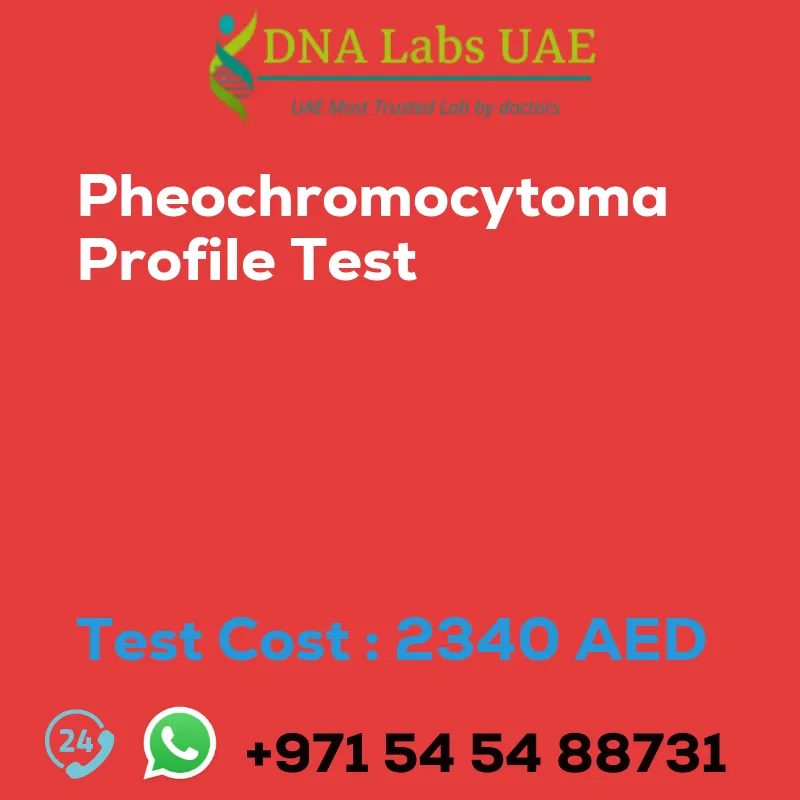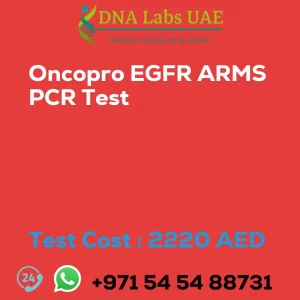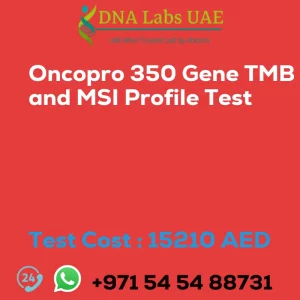Pheochromocytoma Profile Test
Test Name: PHEOCHROMOCYTOMA PROFILE Test
Components:
- VMA
- Metanephrines
- Catecholamines
- Chromogranin A
Price: 2340.0 AED
Sample Condition: 2 mL (1 mL min.) plasma from 1 Lavender Top EDTA tube AND 50 mL (10 mL min.) aliquot of 24-hour urine. Collect urine with appropriate volume of 50% HCl to maintain pH between 1-2. Do not use concentrated HCl. Record 24-hour volume on test request form and urine container. Ship frozen. DO NOT THAW.
Patient Preparation: Patient should strictly avoid Alpha-one blockers, Aminophylline, Amphetamines, Ampicillin, Beta-blockers, Ephedrine, Imipramine, Methyldopa, Buspiron, Codeine, L-Dopa, MAO inhibitors, Nicotine, Phenacetin, Phenothiazine, Theophylline, Vasodilators, Aspirin, PAS, Alpha-two agonists, Bromocriptine, Calcium channel blockers (long term use), Clofibrate, Propranolol, Penicillin, Reserpine, Thyroxine, Alpha-methyldopa, Isoproterenol, Labetalol, Mandelamine, Paracetamol, Cimetidine, Metoclopramide, vigorous exercise, alcoholic beverages, tea/coffee, tobacco, chocolate, pepper, vanilla & banana at least 72 hours before and during specimen collection.
Report Delivery: Sample Wed / Sat by 9 am; Report 2 days
Method: HPLC-EC, TRACE, LC-MS/MS
Test Type: Cancer
Doctor: Oncologist
Test Department: HPLC
Pre Test Information: Strictly avoid Alpha-one blockers, Aminophylline, Amphetamines, Ampicillin, Beta-blockers, Ephedrine, Imipramine, Methyldopa, Buspiron, Codeine, L-Dopa, MAO inhibitors, Nicotine, Phenacetin, Phenothiazine, Theophylline, Vasodilators, Aspirin, PAS, Alpha-two agonists, Bromocriptine, Calcium channel blockers (long term use), Clofibrate, MAO inhibitors, Propranolol, Penicillin, Reserpine, Thyroxine, Alpha-methyldopa, Isoproterenol, Labetalol, Mandelamine, Paracetamol, Cimetidine, Metoclopramide, vigorous exercise, alcoholic beverages, tea/coffee, tobacco, chocolate, pepper, vanilla & banana at least 72 hours before and during specimen collection.
Test Details:
The Pheochromocytoma Profile test is a diagnostic tool used to assess the presence of pheochromocytoma, a rare tumor that develops in the adrenal glands. This profile test typically includes the following components:
- Plasma Metanephrines: This test measures the levels of metanephrine and normetanephrine, which are breakdown products of adrenaline and noradrenaline. Elevated levels of these metabolites in the plasma can indicate the presence of pheochromocytoma.
- Urinary Metanephrines: Similar to the plasma metanephrines test, this test measures the levels of metanephrine and normetanephrine in the urine. Elevated levels of these metabolites can also indicate the presence of pheochromocytoma.
- Plasma Catecholamines: This test measures the levels of adrenaline, noradrenaline, and dopamine in the plasma. Elevated levels of these hormones can be indicative of pheochromocytoma.
- Urinary Catecholamines: This test measures the levels of adrenaline, noradrenaline, and dopamine in the urine. Elevated levels of these hormones can suggest the presence of pheochromocytoma.
- Plasma Free Metanephrines: This test measures the levels of free metanephrines in the plasma. Free metanephrines are considered more sensitive and specific for diagnosing pheochromocytoma compared to total metanephrines.
- Genetic Testing: In some cases, genetic testing may be included in the pheochromocytoma profile to identify specific gene mutations associated with pheochromocytoma, such as mutations in the RET, VHL, or SDH genes.
The results of the pheochromocytoma profile test can help healthcare providers confirm or rule out the presence of pheochromocytoma. If the results are positive, further imaging studies, such as CT scans or MRI, may be ordered to locate and evaluate the tumor. Treatment options for pheochromocytoma typically involve surgical removal of the tumor.
| Test Name | PHEOCHROMOCYTOMA PROFILE Test |
|---|---|
| Components | *VMA*Metanephrines*Catecholamines *Chromogranin A |
| Price | 2340.0 AED |
| Sample Condition | 2 mL (1 mL min.) plasma from 1 Lavender Top EDTA tube AND 50 mL (10 mL min.) aliquot of 24-hour urine. Collecturinewithappropriate volumeof50%HClto maintainpHbetween1\u0192??2.Donotuse concentrated HCl. Record 24 hour volumeon test request form and urine container. Ship frozen. DO NOT THAW. Patient should strictly avoid Alpha-one blockers, Aminophylline, Amphetamines, Ampicillin, Beta-blockers, Ephedrine, Imipramine, Methyldopa, Buspiron, Codeine, L-Dopa, MAO inhibitors, Nicotine, Phenacetin, Phenothiazine, Theophylline, Vasodilators, Aspirin,PAS, Alpha-two agonists, Bromocriptine, Calcium channel blockers (long term use), Clofibrate,Propranolol, Penicillin, Reserpine, Thyroxine, Alpha-methyldopa, Isoproterenol, Labetalol, Mandelamine, Paracetamol, Cimetidine, Metoclopramide, vigorous exercise,alcoholic beverages, tea\/coffee,tobacco, chocolate, pepper, vanilla & banana at least 72 hours before and during specimen collection. |
| Report Delivery | SampleWed / Sat by 9 am; Report 2 days |
| Method | HPLC-EC, TRACE, LC-MS/MS |
| Test type | Cancer |
| Doctor | Oncologist |
| Test Department: | HPLC |
| Pre Test Information | Strictly avoid Alpha-one blockers, Aminophylline,Amphetamines, Ampicillin, Beta-blockers, Ephedrine, Imipramine, Methyldopa, Buspiron, Codeine, L-Dopa, MAO inhibitors, Nicotine, Phenacetin, Phenothiazine, Theophylline, Vasodilators, Aspirin,PAS, Alpha-two agonists, Bromocriptine, Calcium channel blocke(long term use), Clofibrate, MAO inhibitors, Propranolol, Penicillin, Reserpine, Thyroxine, Alpha-methyldopa, Isoproterenol, Labetalol, Mandelamine, Paracetamol, Cimetidine, Metoclopramide, vigorous exercise,alcoholic beverages, tea/coffee,tobacco, chocolate, pepper, vanilla & banana at least 72 hours before and during specimen collection. |
| Test Details |
The Pheochromocytoma Profile test is a diagnostic tool used to assess the presence of pheochromocytoma, a rare tumor that develops in the adrenal glands. This profile test typically includes the following components: 1. Plasma Metanephrines: This test measures the levels of metanephrine and normetanephrine, which are breakdown products of adrenaline and noradrenaline. Elevated levels of these metabolites in the plasma can indicate the presence of pheochromocytoma. 2. Urinary Metanephrines: Similar to the plasma metanephrines test, this test measures the levels of metanephrine and normetanephrine in the urine. Elevated levels of these metabolites can also indicate the presence of pheochromocytoma. 3. Plasma Catecholamines: This test measures the levels of adrenaline, noradrenaline, and dopamine in the plasma. Elevated levels of these hormones can be indicative of pheochromocytoma. 4. Urinary Catecholamines: This test measures the levels of adrenaline, noradrenaline, and dopamine in the urine. Elevated levels of these hormones can suggest the presence of pheochromocytoma. 5. Plasma Free Metanephrines: This test measures the levels of free metanephrines in the plasma. Free metanephrines are considered more sensitive and specific for diagnosing pheochromocytoma compared to total metanephrines. 6. Genetic Testing: In some cases, genetic testing may be included in the pheochromocytoma profile to identify specific gene mutations associated with pheochromocytoma, such as mutations in the RET, VHL, or SDH genes. The results of the pheochromocytoma profile test can help healthcare providers confirm or rule out the presence of pheochromocytoma. If the results are positive, further imaging studies, such as CT scans or MRI, may be ordered to locate and evaluate the tumor. Treatment options for pheochromocytoma typically involve surgical removal of the tumor. |








